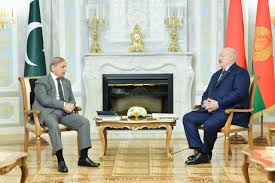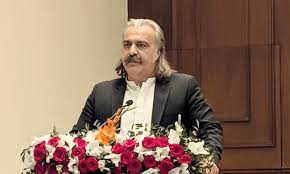Italian, the language of love

Rome: It happened again the other day. I was walking down the street in my home city in the US when I heard it; a couple speaking Italian. I hurried to catch up with them, staying close so I could eavesdrop. From what I could understand, they were talking about remodelling their house. Not the most elegant topic. But the words sounded so beautiful that I cried.
I had the same reaction when I moved home after spending two years in Florence, when I wept at the lack of attention to beauty in my own American city. Italians are always using the word bello (beautiful) for everything good. In Italy, beauty is paramount. And Italian is no different.
This passionate tongue can seduce people so thoroughly they’ll even change their lives for it. Some move to Italy on a whim and remodel abandoned farmhouses. Others sit in classrooms, trying earnestly to pronounce its odder-sounding words (like tongue-bending uomini, the word for ‘men’). Others endeavour to stay awake through hours-long operas. And that’s no accident. Italian, as we know it today, was meant to enchant, charm and beguile. It’s because this language was created by poets – artists who left their mark on the country by shaping its signature sound.
Italian has a unique history born of geopolitics. Compared to its Western European counterparts, like France and Spain, the country was unified relatively late, in 1861. Up until the 1950s, when televisions became more common, 80% of people spoke a dialect as their first language, according to Michael Moore Francis, an interpreter and the permanent mission of Italy to the United Nations.
In Italy, beauty is paramount, and Italian is no different.
“Spain and France had unification earlier, and so theirs were the languages of government and administration… Italian, on the other hand, was very oriented toward the literary,” he said.
For hundreds of years, what is now Italy was divided into regional kingdoms and lacked a cohesive government with an official, administrative tongue. As a result, Italian was fashioned by the people who needed it to express themselves creatively. Writers and poets shaped its style and vocabulary over centuries, with beauty and sound as some of their primary considerations. But each region had its own dialect: Piedmontese, Romanesco, Napoletano, Siciliano, Lombardo, to name a few. But ultimately, it was Tuscan that prevailed.
Italian is a passionate language intended to enchant, charm and beguile (Credit: Jodi Cobb/Getty Images)
Perhaps this is no coincidence. Tuscany, with its rolling hills, vineyards and river valleys is one of Italy’s most inspiring regions. It gave birth to the Renaissance and remains an epicentre of language, art, fashion and tourism. When I lived in the regional capital Florence – likewise enchanted by the bouncing, biting, alluring music of the language – I learned from my native-born friends that a Tuscan accent was point of pride. On long, languid summer evenings, they would huff and whisper through their ‘c’ sounds, ordering glasses of Hoca Hola (instead of Coca Cola) for the table, usually no more than a stone’s throw from some depiction or namesake of the city’s most famous poet, Dante Alighieri.
Alighieri played an important role in the development of the Italian language. Born in Florence in 1265 (where his home is now a museum), he wrote the enduring classic, the Divine Comedy, a narrative poem in which he describes travelling through hell, purgatory and paradise guided by Beatrice, his ideal woman. But as well as penning something remarkable, he did something radical for his time; he wrote in his native Tuscan dialect, even though Latin was the language of choice among the educated elite. He even defended his choice in a work called De Vulgari Eloquentia (On Eloquence in the Vernacular). In the years that followed, he was memorialised as a champion of the region and the language.
Remarkably, interest in Alighieri’s work has never waned. It’s why so many travellers flock to the many parts of Florence that bear his image. There’s a statue of him looking ponderous and holding a lyre in the world-famous Uffizi museum, and another in the sprawling Piazza Santa Croce. The sculptures tower above the crowds, as if keeping watch. But although Dante is the best-known Italian writer, he wasn’t the only one who shaped the Italian language we know today.
In 1304, Francesco Petrarca (or Petrarch) was born in the Tuscan town of Arezzo. Sometimes known as the founder of Humanism, he also wrote many love poems in his native, Tuscan Italian, as did his Florentine contemporary and friend Boccaccio, the author of The Decameron. Petrarch wanted more people to understand his poetry, but he also wanted to change Italian’s reputation and prove that it could be just as sophisticated as Latin, which was still the standard tongue for intellectual and artistic exchanges.
“He was trying to prove that Italian was every bit as elevated as a classical language [such as Latin],” Francis said. “And so he used a style that was narrow and very aristocratic.”
Petrarch may sound a bit formal and flowery today, but people went wild for him in the Elizabethan era, according to Francis. It’s likely no coincidence that Shakespeare set his play, Romeo and Juliet – with its long poetic monologues and love-struck protagonists – in Italy.
But although few read his poems today, Petrarch’s importance is key, because in the 15th Century a Venetian named Pietro Bembo decided that Petrarch had written the most exquisite Italian of anyone, anywhere, and that it was time for literary Italian to finally take its rightful place among the world’s great literary languages.
Bembo, who was also a poet and a lover of Tuscan Italian, came from a powerful, aristocratic family. He became the secretary to Pope Leo X in Rome, and later a cardinal who was memorialised by the famous Venetian painter, Titian. Petrarch’s brand of lofty Italian poetry appealed to him.
While living in the walled, medieval city of Urbino (now a Unesco World Heritage site), Bembo wrote his most famous work, Prose della Volgar Lingua (Discussions on the Vernacular). In it, he described how to write the most beautiful, elevated Italian, one that had the same meter as Latin. Bembo chose 14th-century Tuscan as his model, and Petrarch as the writer who had done it best.
“Bembo was very into sound and having the examples of the language based on the work of poets [like Petrarch]. He talked a lot about the qualities of composition, and about finding the perfect balance between the ‘light’ and ‘heavy’ sounds,” Francis said. Bembo’s work was used to shape the language spoken across Italy today.
Some linguists have suggested that Italian and other romance languages, like Spanish and French, appeal to English speakers because they recognise tones and sounds they’re used to. But Dr Patti Adank, who teaches speech, hearing and phonetic sciences at University College London, says that Italian is attractive to the ear because of its so-called ‘melody’. Italian benefits from a very high number of words that end in vowels, and few words with many consonants in a row, creating an open sound that makes it perfect for singing.
Or, as the Holy Roman Emperor Charles V allegedly said, “I speak Spanish to God, Italian to women, French to men and German to my horse.”
Of course, as Francis admitted, Tuscany’s reputation as the epicentre of the Italian language may be nothing more than ‘propaganda’ at this point, hundreds of years later. Other cities, like Milan, have, in ways, eclipsed Florence as centres of commerce and notoriety. And like many cities that rely on tourism, much of Florence’s glory is based on the past.
But when Alessandro Manzoni, writer of the first Italian novel and pioneer of modern Italian, was almost done with his book, I promessi sposi (The Betrothed) in 1827, he said that before finishing he had to go to Florence and ‘wash’ the book’s language in the River Arno, the famous waters that cut the city in two.
Fortunately, travellers have the opportunity to hear both the Tuscan version and the many regional dialects that, particularly the south, still differ widely from traditional Italian. In fact, the further you get from Tuscany the more pronounced this becomes, with dialects around the county showing influences of a dizzying myriad of tongues, including Greek, Arabic, Spanish, French and even Hebrew.
Luckily, bello works wherever you go





